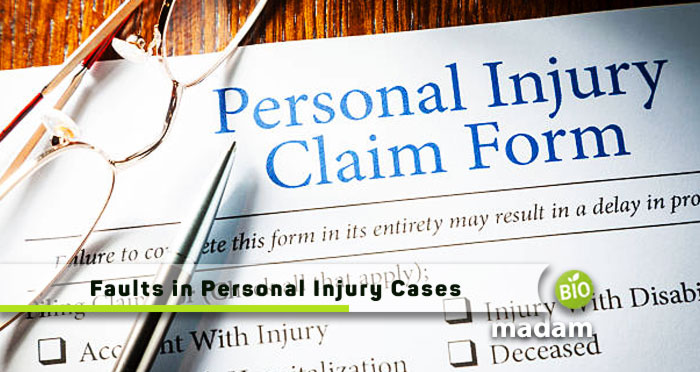When it comes to establishing fault in personal injury cases, most people think that there are general rules that always apply. This isn’t always the case, however. Each situation is unique and must be evaluated on its own merits. There are some general principles that can help you determine fault, but every situation is different. In this article, we’ll take a look at some of the factors that are considered when establishing fault in a personal injury case.
Causation
When it comes to personal injury cases, one of the most important things to consider is causation. In order to hold someone liable for your injuries, personal injury lawyers in Jackson, MS advise that you must be able to prove that their actions or inaction caused your injuries. Establishing causation can be tricky, and it’s often one of the most contested issues in a personal injury case. There are a number of factors that can be considered when determining causation, several of which are discussed below.
The Nature of the Injury

There are general rules that apply when establishing fault in personal injury cases. However, the specific facts of each case will always be taken into account. One of the most important factors in any personal injury case such as those resulting from car accidents is the nature of the injury. Some injuries are more serious than others, and as a result, they may be easier to prove fault for. Injuries that have resulted in death or permanent disability are generally easier to prove fault for than those that have not.
The Severity of the Injury
The severity of an injury is also taken into account when determining fault. Generally speaking, the more severe an injury is, the easier it will be to prove that someone was at fault. This is because more severe injuries usually require more medical treatment. As a result, there is more evidence to support a claim of negligence.
The Circumstances of the Injury
The circumstances of an injury can also be taken into account when establishing fault. For example, if an injury occurs as a result of an accident that could have been prevented, it may be easier to prove fault than if the injury was caused by something out of the victim’s control.
The Role of the Victim in Causing their Injury
In some cases, the victim may have played a role in causing their own injury. This is known as contributory negligence, and it can affect whether or not the victim is able to recover damages from the person who caused the injury. If the victim is found to be contributorily negligent, they may only be able to recover a portion of the damages they are owed.
The Role of the Defendant in Causing the Injury
In addition to considering the role of the victim in causing their injury, the court will also look at the role of the defendant. If the defendant is found to be more at fault than the victim, the victim may be able to recover more damages. Conversely, if the defendant is found to be less at fault than the victim, the victim may receive less compensation for damages.
The Doctrine of Res Ipsa Loquitur
In general, the doctrine of res ipsa loquitur applies in personal injury cases when the defendant is in exclusive control of the situation in which the plaintiff was injured. This means that the defendant is the only person who could have caused the injury, and therefore, it is reasonable to infer that the defendant is at fault. There are a few exceptions to this rule, including when the plaintiff was contributorily negligent or when there was an intervening force that caused the injury.
The Doctrine of Comparative Negligence
Another factor that is often considered when determining fault in a personal injury case is comparative negligence. Comparative negligence looks at what percentage of blame each party bears for the accident. If the plaintiff was found to be partially responsible for the accident, their damages may be reduced accordingly.
The Doctrine of Assumption of Risk
Another factor that can be taken into account when determining fault is the doctrine of assumption of risk. This doctrine applies when the plaintiff voluntarily engages in an activity that carries a known risk of injury. If the court finds that the plaintiff assumed the risk of injury, they may not be able to recover damages from the defendant.
The Principle of Substantial Factor
When it comes to establishing fault in a personal injury case, there is no one-size-fits-all answer. Rather, the court will look at the facts of the individual case and decide who was responsible for the injury. However, there are some general rules that may be helpful in understanding how fault is determined.
One such rule is the principle of substantial factor. This principle holds that an individual can be held liable for an injury if they were a substantial factor in causing it. What this means is that the defendant’s actions must have played a significant role in causing the injury, and it cannot be said that the injury would have occurred regardless of their involvement. This principle can be difficult to apply in practice, as it requires the court to weigh all of the factors that led to the injury.
The Principle of Proximate Cause
Another important principle when determining fault is the principle of proximate cause. This principle states that the defendant can only be held liable for injuries that were reasonably foreseeable. What this means is that the defendant must have had knowledge that their actions could potentially lead to harm, and they must have been in a position to prevent that harm from occurring. This principle is also difficult to apply in practice, as it requires the court to consider all of the potential consequences of the defendant’s actions.
The Last Clear Chance Doctrine
This doctrine applies when the defendant had the last clear chance to avoid a collision, but failed to do so. The plaintiff must show that the defendant had knowledge of the danger and that there was still time to avoid the accident after that knowledge was acquired.

When it comes to establishing fault in a personal injury case, there are no definitive rules. Rather, the court will look at all of the relevant facts and decide who was responsible for the injury. As you can see, there are a lot of factors that go into determining fault in a personal injury case. This can be a complex process, and it is important to seek legal advice from an experienced attorney. However, if you have a general understanding of the basics, you will be in a better position to make informed decisions about your case.

Hi, they call me Jenna, and I am also known for achieving a gold medal during my Ph.D. in science life. I always had a dream to educate people through my utmost writing hobby. So, I chose this blogging path, and Biomadam gave me this opportunity to present for them. I now stand to entertain you. Continue reading my articles & discuss if you’ve any confusion through the comment section below.

